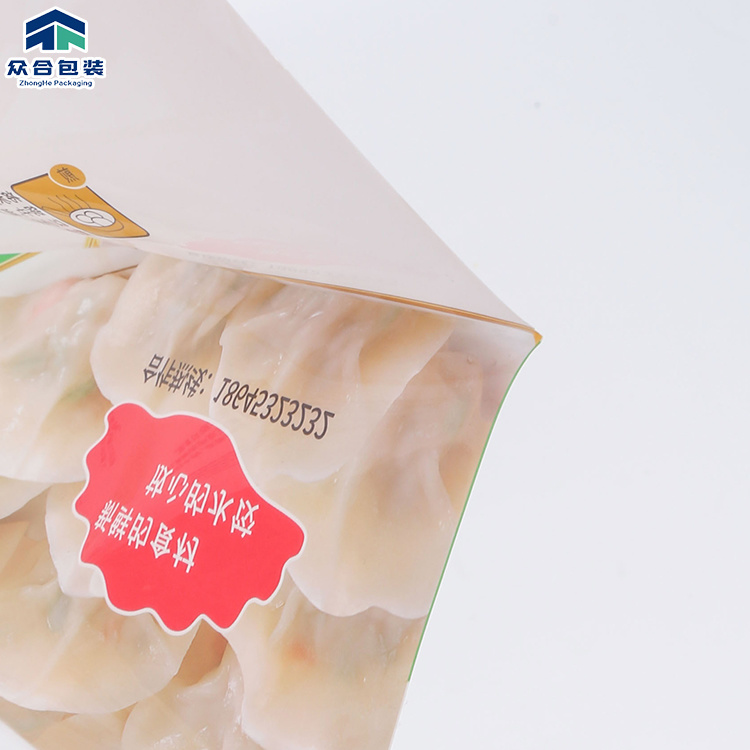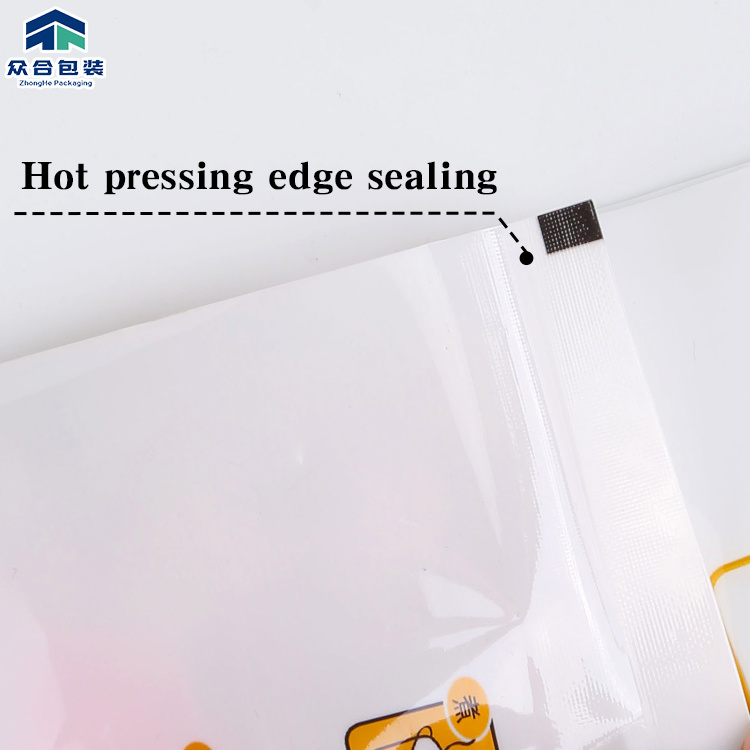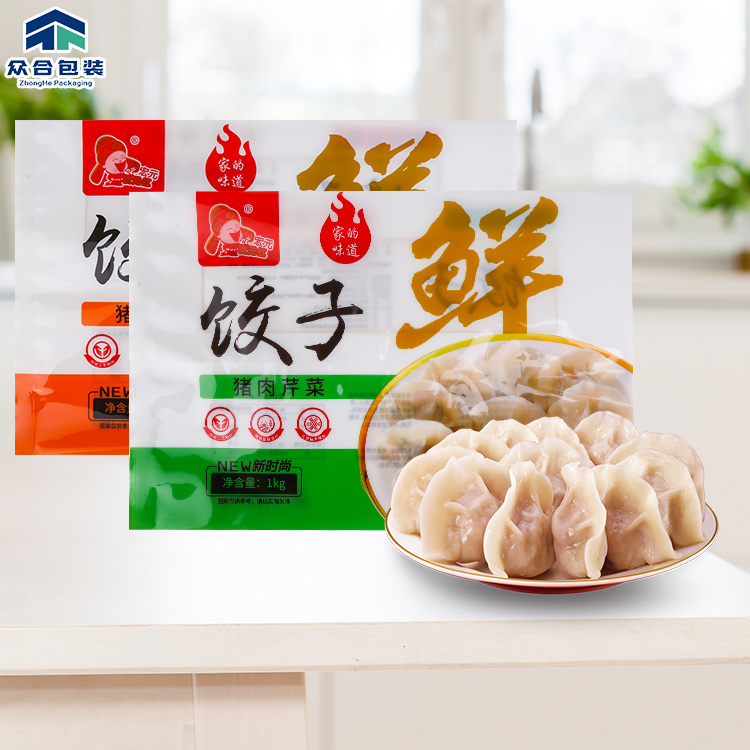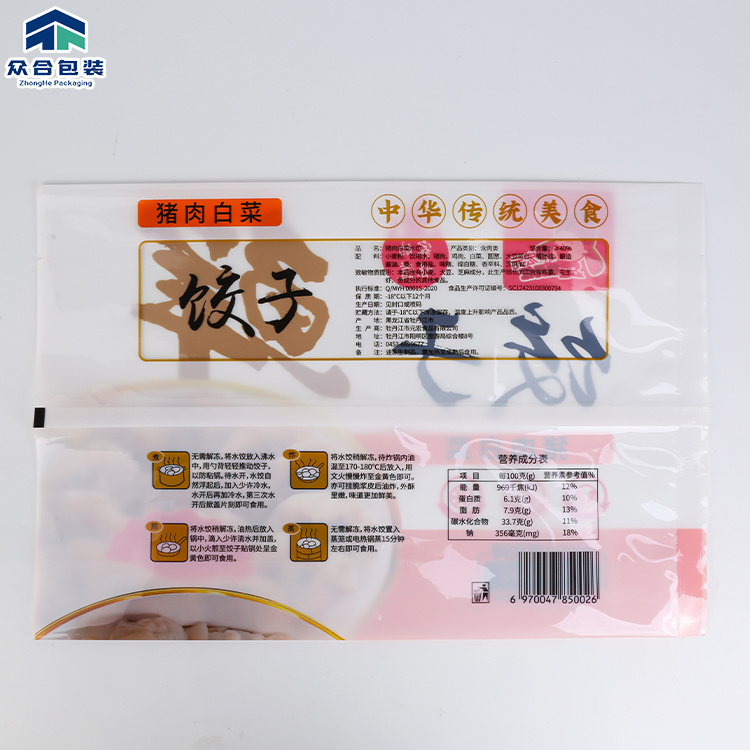Category:
- Product Description
Frozen packaging bag
-
- Commodity name: Frozen packaging bag
Brief Description: Frozen product packaging is designed to ensure the quality, safety, and freshness of frozen food in low-temperature environments, and to facilitate storage, transportation, and sales. For example, in the frozen food section of a supermarket, various frozen foods rely on appropriate packaging to maintain their good condition.
Frozen product packaging is the packaging material used to protect and preserve frozen food.
Brief Description:
Frozen product packaging is designed to ensure the quality, safety, and freshness of frozen food in a low-temperature environment, and to facilitate storage, transportation, and sales.
For example, in the frozen food section of a supermarket, various frozen foods rely on appropriate packaging to maintain their good condition.
Detailed Description of Frozen Product Packaging
The materials used in frozen product packaging are usually carefully selected and combined. Polyethylene (PE), with its excellent low-temperature resistance and flexibility, is often used as the base layer, and can withstand extremely cold conditions without breaking. Polypropylene (PP) provides a certain degree of strength and rigidity, ensuring the stability of the packaging shape. Polyester (PET) increases the wear resistance and transparency of the packaging, allowing consumers to observe the food inside. Aluminum foil is a key barrier layer, effectively blocking oxygen, moisture, and light, preventing food oxidation and spoilage.
In terms of bag types, three-side sealed bags have a compact structure and better sealing, suitable for packaging small frozen foods such as shrimp; stand-up pouches can stand upright, with prominent display effects, often used for packaging frozen fruit slices; zipper bags allow consumers to open and close them multiple times, suitable for home storage of frozen meat; and gusset bags have a large capacity, suitable for packaging large volumes of frozen vegetables.
In addition, frozen product packaging also considers anti-frost and puncture resistance. The printing on the packaging surface usually uses low-temperature resistant ink to clearly display product information, shelf life, and usage methods.
For example, the packaging of a frozen pizza may use a PET/aluminum foil/PE composite structure, with a gusset bag type, and the printing displays attractive pizza images and detailed ingredient descriptions.
What is Frozen Product Packaging?
Frozen product packaging is a series of containers or bags specifically designed for frozen food, aimed at providing effective protection and storage conditions.
It is more than just a layer of wrapping material; it is a key link in ensuring the quality and safety of frozen food.
Why is it called Frozen Product Packaging?
Because it is specifically developed and named according to the special preservation requirements of frozen products, such as extremely low temperatures, preventing moisture condensation and oxidation.
What types of bags are used for frozen product packaging?
Common bag types for frozen product packaging include:
Three-side sealed bags: Three sides are sealed, with strong sealing, effectively preventing cold air leakage and the intrusion of external impurities.
Stand-up pouches: The bottom has a special design, allowing it to stand upright on shelves or desktops, with good display effects.
Zipper bags: Equipped with a zipper seal, convenient for consumers to use multiple times, and can better maintain the frozen state of the remaining food.
Gusset bags: The sides are shaped like accordion pleats, increasing the internal capacity, suitable for packaging large volumes of frozen products.
Characteristics and Material Parameters of Frozen Product Packaging
Characteristics:
Good low-temperature resistance, does not become brittle or break at low temperatures.
Excellent barrier properties, preventing the penetration of oxygen, moisture, and odors.
Anti-frost properties, reducing frost formation on the packaging surface.
Puncture and tear resistance, withstanding the sharp parts of frozen food and the pressure during handling.
Material Parameters:
The thickness of the film is generally between 0.05mm and 0.2mm, adjusted according to the needs of different products.
Tensile strength is usually required to be greater than 15MPa to ensure the mechanical strength of the packaging.
Oxygen permeability should be less than 50cm³/(m²•24h•0.1MPa), and water vapor permeability should be less than 5g/(m²•24h) to ensure good barrier performance.
Frozen Product Packaging Processing Flow
Raw material selection: According to product requirements, select raw materials that meet food contact standards and low-temperature performance, such as PE, PP, PET, and aluminum foil.
Printing plate making: Design printing patterns and make high-precision printing plates.
Printing: Using gravure printing or flexographic printing technology, print patterns, text, and logos on the packaging material, using low-temperature resistant ink to ensure printing quality.
Lamination: Using glue or hot pressing, multiple layers of materials are laminated together to form packaging materials with comprehensive performance.
Curing: The laminated material is placed in a specific environment for curing, allowing the glue to fully solidify and enhance the interlayer bonding strength.
Slitting: According to the predetermined size, the laminated large-size material is slit into the appropriate width.
Bag making: Using bag-making equipment, the slit material is made into the required bag type, such as three-side sealed bags, stand-up pouches, etc., and heat sealing is performed.
Quality inspection: Conduct comprehensive quality inspection of the produced frozen product packaging, including appearance inspection, size measurement, seal strength test, barrier performance test, etc., to ensure that the product meets quality standards.
Packaging: Organize, count, and package qualified products, ready for shipment.
Our Advantages
As a manufacturer, we have the following advantages:
Advanced equipment and technology: We have industry-leading production equipment and cutting-edge packaging technology, capable of producing high-quality, high-precision frozen product packaging.
Strict quality management: We have established a complete quality management system, from raw material procurement to finished product shipment, with strict monitoring throughout the entire process to ensure that products meet national and industry standards.
Customized service capabilities: We can provide personalized packaging solutions according to customer's special needs, including material selection, bag type design, and printing content.
Cost control: By optimizing production processes, rationally procuring raw materials, and efficient production management, we effectively reduce production costs and provide customers with competitive prices.
Fast Delivery Capability: An efficient production team and logistics distribution system ensure timely delivery of customer orders and meet urgent customer needs.
What frozen product packaging brings to customers
For customers, our frozen product packaging can bring the following important values:
Extended Shelf Life: Through excellent barrier and sealing properties, effectively extends the shelf life of frozen food, reducing food waste and loss.
Maintain Quality: Maintains the original color, taste, and nutritional components of frozen food, enhancing consumer satisfaction.
Enhanced Brand Image: Exquisite packaging design and high-quality printing help enhance customers' brand image and market competitiveness.
Convenient Sales and Storage: Suitable bag types and packaging structures facilitate display and storage management for customers in the sales process.
Scope of Application for Frozen Product Packaging
Frozen product packaging is widely used in the following areas:
Frozen Meats: Such as packaging for beef, pork, chicken, etc.
Frozen Seafood: Including fish, shrimp, shellfish, etc.
Frozen Vegetables and Fruits: Such as quick-frozen corn, broccoli, strawberries, etc.
Quick-frozen Foods: Such as dumplings, wontons, glutinous rice balls, etc.
Supermarkets and Retail: In the frozen sections of supermarkets, providing packaging for various frozen foods to consumers.
Catering Businesses: Providing packaging for large quantities of frozen ingredients for restaurants, hotels, etc.
Food Processing Plants: Used for packaging processed frozen foods, ready for distribution.
Online Consultation
Contact us immediately for free expert consultation services!
Related Products



 Haijun Zhang
Haijun Zhang
 WhatsApp (Mia)
WhatsApp (Mia)